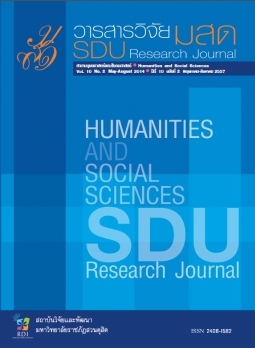Guidelines for Writing and Sumitting Original Manuscripts for Publication in Journal of Multidisciplinary in Social Science
Keywords:
Harvard Education PressAbstract
“Teacher Learning in the Digital Age” provides an inclusive perspective of online teacher professional development and detailed effective models of online and blended development in STEM courses. This book
describes exemplary educational practices with critical lessons learned for practitioners, designers, educators, researchers, and policymakers interested in the
professional development and instructional innovations for improving classroom instruction and student
achievement. Dr. Chris Dede, one of the key editors on this book, is the Timothy E. Wirth Professor in Learning Technologies and former chair of the Learning and Teaching Department at the Harvard Graduate School of Education (HGSE) who has contributed the 2010
National Education Technology Plan and membered
the US Department of Education’s Expert Panel on Technology. He unquestionably has an influence in
engaging the teacher development and enhancing
technology to support teacher learning in the US. He and other editors gathered original articles to seek answers to the questions what advantage of the ongoing evolution of digital technologies, what works and what doesn’t and for whom. The answers highlighted various models of educators in the field of professional development with focusing on Science, Technology, Engineering, and Mathematics education. The chapters of this book are grouped into four sections: As part of the introduction section, Barry Fishman, a professor from the University of Michigan, explores the possible futures of online teacher professional
development, the exemplary model with trends and his newest research in chapter 1. Section I Courses begins with chapter 2, Susan Doubler and Katherine Paget then introduce web-based videos named Talk Science that help teachers learn more about the science concepts and strategies. In chapter 3, MOOC-Ed with four major design principles: multiple voices, self-directed learning, peer-supported learning, and job-connected learning is built on prior works of Glenn Kleiman and Mary Wolf to help teachers meet their professional learning needs. Ruth Schoenbach and her associate provide the immersive online iRAISE (Internet-based Reading Apprenticeship Improving
Science Education) course that was true PLCs for STEM
Journal teachers in chapter 4. In chapter 5 The American
Museum of Natural History (AMNH) centerpiece
program Seminars on Science designed by Robert
Steiner and his work team, AMNH scientists, as a series of massive open online courses to increase teacher’s understanding and experience with authentic science and to inspire educators to become lifelong learners in a discussion-based asynchronous learning environment. Section II Curriculum Support, Abigail Jurist, Arthur Eisenkraft, and Erica Fields develop the Active Physics Teacher Community (APTC) model to help teachers use the Active Physics Curriculum and provide formal instruction directly related to the lessons
compared the effectiveness with other teachers using the same lesson plans and curriculum in chapter 6. In chapter 7 The National Science Foundation (NSF) has funded the Electronic Teacher Guide (eTG) Project, under the direction of Jacqueline Miller and Katherine Paget, with the goal of developing digital version of a print teacher guide composed of three
characteristics: digital tools, modes of a teachers’ work life and levels of interaction with the materials. The teacher guide as a powerful resource is developed
to facilitate implementation of the curricula, student understanding, build scientific skills, assist professional learning with new educational strategies. Barbara Zahm and Ruta Demery design, develop, and test a cyberlearning professional development
model in chapter 8 that could be readily and
inexpensively distributed to school districts. This model or CyberPD is included four key pedagogical elements: driving questions, learning by design, sustained inquiry, and engagement in scientific reasoning and practices
to help teachers implement the research-based
Project-Based Inquiry Science program and, in return, help continue students’ interest in science and engineering by involving them in relevant experiences. Section III Resources and Strategies, in chapter 9 Al Byers and Flavio Mendez from the National Science Teachers Association (NSTA) give a summary of the available resources on NSTA Learning Center, where more than 170,000 teachers spending many hours
completing web modules, studying online course, joining in web seminars and virtual conferences, and sharing online digital resources.
Kim Frumin, a doctoral candidate of HGSE and Chris Dede explain the important role of moderators in the effective functioning of online professional learning communities in chapter 10. The moderators play the significant roles as facilitators of community discussions and member engagement. To support and encourage online communities, they advise that the moderators should facilitate organization, welcome newcomers, encourage contributions, support top contributors, foster commitment, address problems and model good
behavior. Raymond Rose brings recognition to the unique viewpoints of making online professional learning
accessible for the disability by examining historical background, discussing the current state of online
accessibility, and offering effective recommendations to enhance course accessibility in chapter 11. Section IV Summary Insights, chapter 12, by Steven Schneider and his fellows, illustrate the evolution of WestEd from face-to-face approach into various online deliveries by providing five cases of online professional development at WestEd. Each case includes in-depth courses, curriculum implementation wraparounds, and hybrid and ongoing support models. Last but not lease, Dr. Chris Dede and Dr. Arthur Eisenkraft conclude the insights that coeditors have gained through studying the professional development models presented in the twelve chapters of this book. Professional development is apparently the best expectancy we all have for optimistic sustainable change in curriculum, instruction, and assessment. By the same token, advances in technology can lead to new
professional development and teachers must also alter their practices as the types of students they serve.
Finally, it is important to note that the book “Teacher Learning in the Digital Age” will help all contributors to better understand alternative options for professional development and become skilled, knowledgeable
educators who can lead their own students to understand STEM knowledge and skills more deeply and equip their ability to apply these in real-world situations for the digital age.
Journal








